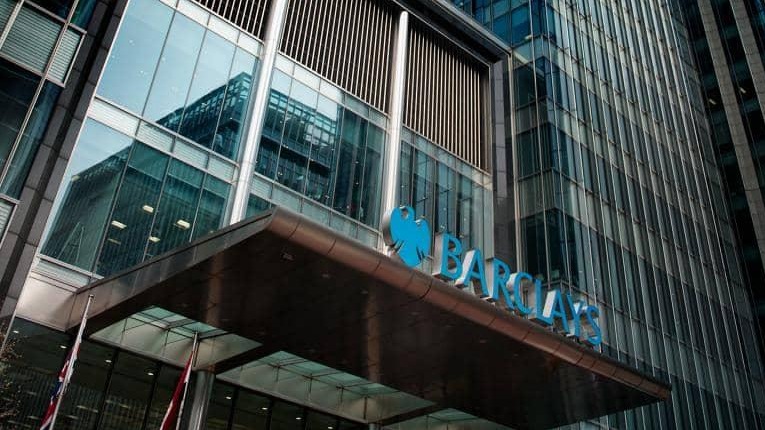Mobile banking in Europe has clocked up its first decade, but much of the market's potential is still unrealised. Graham Buck reviews how this 'sleeping giant' is likely to stir into life over the next few years from checking your account, making payments, to remittances, and a myriad of other uses, the mobile has the potential to take centre stage
As the Noughties draw to a close, mobile banking in the UK is marking
its first 10 years of development with much of its potential still untapped. The decade began with mobile banking services restricted to simple tasks, such as answering bank balance enquiries and text alerts. Minor application-based services subsequently followed, but UK user numbers were no more than a very modest 25,000 customers and the initial push petered out. Recent research from vendor Fujitsu Services indicates that even now only one in 20 Europeans cites mobile as their preferred method of banking, although the UK now has a rather more impressive two million users of mobile banking services.
Uptake has doubled in the past year after Lloyds Banking Group Mobile Services launched and many other banks also unveiled similar services based on the MoniLink network. This service is provided by the technology firm Monitise, using VocaLink's nationwide ATM and payments infrastructure, their old joint venture partner. Sixty per cent of all adults in the UK now have a bank account that can be accessed via MoniLink, including customers of HSBC, RBS/NatWest; Santander/A+L; and Lloyds. All of the banking institutions in the UK are connected to the VocaLink ATM scheme and MoniLink connects into the Harrogate LINK data centre and then on to all the mobile operators, such as Orange and O2, meaning banks don't have to sign agreements with each operator or do much integration work. The service is presently a little limited. Most banks only allow funds to be transferred internally between bank accounts within their own group, real-time bank checking, mini-statement provision and crediting pay as you go phones. In future, however, customers will be able to move money between any accounts, pay bills, purchase tickets and do other transactions. Some already can, but it's no revolution yet.
Progress has been slow due partly to the fact that Britons are already highly banked, with a mature, multi-channel network and many alternatives to mobile, explains Phil Sowter, head of mobile and self-service initiatives at Barclays Bank. "At the moment, mobile banking is a sleeping giant and the task is finding the right mechanism for developing its potential," he says.
As it happens, Colin Kerr, Microsoft's worldwide industry manager for payments and core banking, rates Barclays along with Nationwide Building Society as the most innovatory UK bank in developing mobile services to date. "There are a variety of different avenues to explore, including consumer payments, treasury and cash management, which could increase usage figures" he comments. "Mobile banking and mobile payments are becoming key to customer acquisition and also offer banks a digital marketing channel."
Comparing development in the regions of North America, Europe and Asia, he suggests "the experience in North America is probably the least evolved of the three, and Asia the most evolved. In Europe, most innovation is in the north, with Scandinavian countries furthest ahead in development, followed by the UK and Germany. However, fragmentation makes a comprehensive mobile strategy difficult."
Challenges and conservatism
Mobile banking and payments in the UK have the potential to become mainstream channels, but three major challenges must be overcome in order to accelerate progress:
• Mobile technology: small screens and slow internet connections have hindered the adoption of mobile banking. However, as 3G technology rapidly develops and becomes the norm in new more advance smartphone devices, this should smooth adoption;
• Fee structure: a key target market for mobile payments is younger consumers, who are typically early adopters. So far, high fees for mobile payments have discouraged these younger, price-conscious users, so banks and mobile operators, who could conceivably disintermediate, need to set the right structure to make the service attractive;
• Security concerns: Using existing infrastructures, such as ATM networks, banks are able to secure mobile payments. However, it is crucial that these security measures are communicated to encourage uptake. Paying people, outside of your own banking group or indeed country, will also have to become possible.
An absence of the 'wow factor' has also impeded progress, suggests Diarmuid Mallon, who works for Sybase 365's mCommerce team. "Some of the services launched so far have lacked an element to make them compelling. On top of this banks have often applied a per service charge, for example £2.50 each time you access your account." Austria is one of the few European countries to have been more innovatory so far, he believes. Paybox Austria, owned 83.3% by mobilkom Austria and 16.7% by One, has become the leading mobile payments standard with more than 300,000 subscribers, paying via direct debit, and over two million subscribers paying bills via their mobile phone. Again though, where are the banks in this innovation? If they're not careful they'll get left behind in the growth of mobile commerce, only supplying the low value 'vanilla' services.
There is every reason to hope that mobile offerings in the UK will rapidly become more sophisticated, however, over the next two or three years. As the technology becomes more widely adopted, there are expected to be some 20.8 million 3G subscribers by 2012. This will provide a platform for faster and more accessible mobile banking, linked to current accounts, remittances, and a host of other services.
Mobile money
According to Hannes Van Rensburg, chief executive of mobile wallet software developer, Fundamo, banks in both the UK and continental Europe are finally starting to wake up to the benefits of mobile money. "The strait-jacket of waiting for standards to mature is being thrown off by a few banks," he remarks. "We are starting to see innovation in delivering transformational banking products in Europe now." To cite a couple of examples from many: MiniTix developed by Rabobank in the Netherlands enables consumers to pay small amounts using their mobile, the internet or digital TV, as well as downloading music online, voting in TV shows and getting information on their account from their mobile.
Norway's mobile payments solutions provider, Luup International, in addition to working on a global mobile money transfer service with MoneyGram, teamed up earlier this year with Deutsche Bank (db) to offer mobile phone payments services to clients in more than 80 countries across Europe, the Middle East and Asia. The combination of the Lupp standard and network with db's banking expertise is expected to be a winner, especially in the remittances market but also with general consumers and corporations.
Consumer demand is a major driver, says Jeremy Light, a senior manager in the banking practice at Accenture. Banks are recognising this is a market they cannot afford to ignore, particularly among the young. "Although they see mobile banking as an increasingly important channel, it comes with additional costs without necessarily creating additional sales yet," he adds. "So banks are targeting the segments where they see growing demand, they're putting out tactical solutions and marketing them in a tactical way."
Conversely, Barry Dark, managing director, EMEA, of the vendor FIS, believes that mobile banking will actually cut costs for banks, in addition to attracting new customers. FIS reckons it is 50% cheaper to deliver than traditional channels. Mobile banking is gaining hold at a time when branch banking is expected to shrink at a rate of 0.5% per annum, according to the vendor's figures, as banks attempt to cut their costs and react to changing consumer habits.
The prospects for mobile banking are contingent on banks being able to persuade consumers they need it. In countries with little or no infrastructure it's a case of necessity for migrant workers seeking to send money back home or simply to save or buy things when there's no branch in your village and no PC at home. "Developing countries have a highly unbanked population, a broad geographical span and limited banking facilities, so the consumer need is there," says Barclays' Sowter, perhaps thinking of his firm's own Hello Money service in India, which has allowed the bank to dispense with a traditional branch network as it targets this market. Add to this the low-cost barriers to entry and this explains the popularity of, for example, South Africa's Absa with its money transfer facility, CashSend.
Future growth
By contrast, in countries with a developed financial structure and online banking already in place, mobile banking must be seen to add value in order to succeed. The best means of achieving this is by adding new features that increase the value of mobile over other methods of banking. Examples of such features include remote deposit capture and person-to-person (P2P) payments. Over the next few years, remote banking is forecast to grow at an annual rate of over 3% in the UK, with a sizeable proportion of this attributable to the impending arrival of more advanced features.
Demographics will also play its part. "Generation Y, 18 to 25-year-olds, live on instant messaging and SMS so will readily use their mobiles to bank," predicts Tim Tyler, product manager for Misys' IFM mobile application, "although in less developed markets demand will be rather more cross-generational." Barclays' Sowter agrees that 'Generation Y' represents key demand for mobile banking services, but the appeal is also strong in the 25-45 year age bracket - after which it tails off sharply.
An effective way of getting all customers used to the idea of the mobile channel is to use it for basic messages about the account, suggests ACI marketing director, Andy Brown. Some banks have already seen positive results from alerting customers via an SMS message when a suspect transaction takes place on their card. "That results in the consumer
becoming involved in the anti fraud activity and feeling that something is really happening to halt compromises of their card," he says. "From there the bank can build other chargeable services that can reinforce the relationship on the mobile phone, positioning the device as a channel for future activity such as customer relationship management, mobile banking and payments."
According to Sebastien Slim, global vice president of pre-sales and marketing for Welcome Real-time, whose main UK customer is ironically Barclaycard, mobile technology represents a much bigger opportunity than contactless cards, as it does not require additional hardware, terminals or the like. "This is also a technology that users always have on them - sometimes you don't have your wallet but you do still have your mobile," he points out. Others would disagree of course and argue that contactless has its place (see our separate article on contactless cards on page 48), although it's undeniable that mobiles are the pre-eminent payments platform in developing countries, where the remittance functionality is so key.
As the Noughties give way to a new decade - the Teenies perhaps - it seems inevitable that the 'sleeping giant' of mobile banking will soon be stirring. With strong demand from younger consumers though, growth might be at the expense of conventional banking, so working out revenue streams and good features is essential.
Latest News
-
Swift plans blockchain-based shared ledger after ‘landmark’ digital asset trial
-
ClearBank rolls out new platform to support stablecoin services
-
LSEG launches blockchain digital settlement platform
-
Pakistan explores Trump-linked stablecoin for cross-border payments
-
Klarna launches instant peer-to-peer payments
-
Visa taps BVNK to deliver stablecoin infrastructure
Creating value together: Strategic partnerships in the age of GCCs
As Global Capability Centres reshape the financial services landscape, one question stands out: how do leading banks balance in-house innovation with strategic partnerships to drive real transformation?
Data trust in the AI era: Building customer confidence through responsible banking
In the second episode of FStech’s three-part video podcast series sponsored by HCLTech, Sudip Lahiri, Executive Vice President & Head of Financial Services for Europe & UKI at HCLTech examines the critical relationship between data trust, transparency, and responsible AI implementation in financial services.
Banking's GenAI evolution: Beyond the hype, building the future
In the first episode of a three-part video podcast series sponsored by HCLTech, Sudip Lahiri, Executive Vice President & Head of Financial Services for Europe & UKI at HCLTech explores how financial institutions can navigate the transformative potential of Generative AI while building lasting foundations for innovation.
Beyond compliance: Building unshakeable operational resilience in financial services
In today's rapidly evolving financial landscape, operational resilience has become a critical focus for institutions worldwide. As regulatory requirements grow more complex and cyber threats, particularly ransomware, become increasingly sophisticated, financial services providers must adapt and strengthen their defences. The intersection of compliance, technology, and security presents both challenges and opportunities.
© 2019 Perspective Publishing Privacy & Cookies













Recent Stories